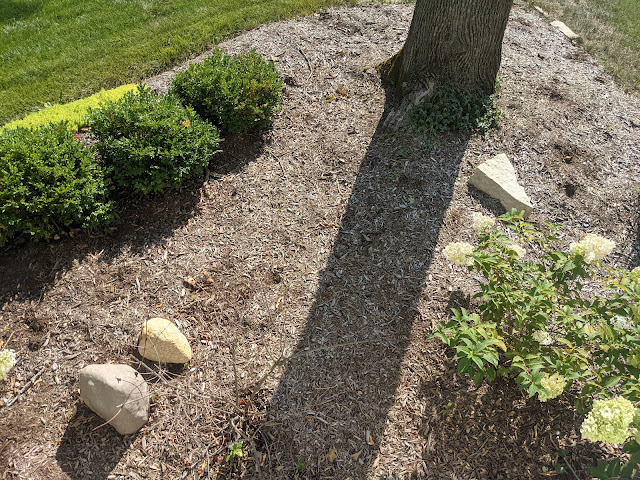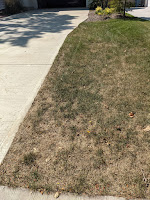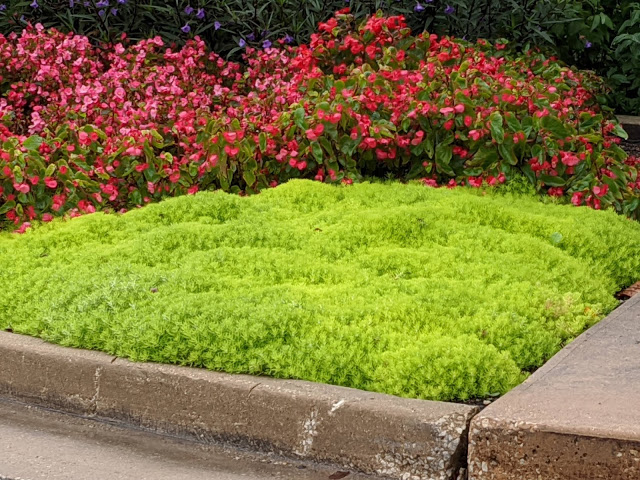Winter Color Groundcover - Lemon Coral Sedum - Zone 5B - December 2022

I've told this story before: All the way back in 2018, we had some Lemon Coral Sedum in one of our patio containers . One way or another, it managed to migrate from the container to the little, square bed next to our back stoop. And, in a surprise to me, it managed to overwinter in that spot underneath a bed of snow. I've since left it there and it has spread out each subsequent year. I had not - up until that point - really thought much about groundcover. But, then I saw this bed planted out front of the entrance of the Morton Arboretum in 2020 . That inspired me to plant a mass of Lemon Coral Sedum up front in our front porch beds in 2021 . It turned out really nice and created a carpet. With the success of the volunteer sedum in our backyard, I thought that I could replicate that growth and split up the front porch sedum and transplanted it in various spots - including IB2Dws and behind the large, Norway Maple in front. A...






